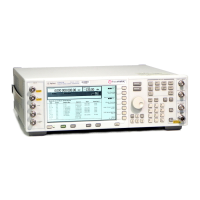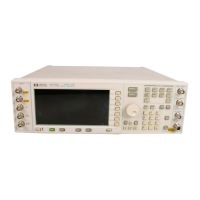Chapter 11 347
GPS Modulation
Real Time MSGPS
RF Power Level Considerations
When you set up your GPS test signal, pay special attention to the RF power level delivered to the GPS
receiver. Because typical GPS sensitivities are between −155 dBm and −159 dBm, delivering a GPS signal
to your device with a power level greater than −150 dBm or less than −160 dBm may produce invalid test
results.
If you use a physical connection to apply the GPS signal to your antenna, keep in mind that most GPS
antennas are active (a DC voltage is delivered to the antenna from the receiver). A DC block is therefore
required between the signal generator and the antenna. For direct connection, Agilent recommends setting
the signal generator RF output power to between −70 and −80 dBm and using an 80 dB attenuator and a DC
blocking device between the signal generator output and the antenna input of the receiver under test.
If you use a radiated connection, place your receiver in a calibrated test fixture designed with a link budget
that will deliver a −150 dBm to −160 dBm power level at the receiver antenna.
Using NMEA data to monitor signal power
One method to monitor the receiver’s perceived signal level is to monitor the National Marine Electronics
Association (NMEA) data stream from the receiver. Most GPS receivers have the capability to output data
via a serial RS232 connection in NMEA format. An NMEA message called GPGSV reports the signal
strength of the satellites that the GPS receiver is tracking. The GPGSV message reports a carrier-to-noise
(CNO) value for each observed satellite. As you monitor this message, increase or decrease the power to the
receiver until the receiver’s perceived CNO values are between 35 and 40. Table 11-1 on page 348 shows
how to obtain the CNO value from the GPGSV message.
The following example is a set of three GPGSV messages. The receiver produces a maximum of three
GPGSV messages every second. The fields are comma-separated; two adjacent commas signify a field for
which a value is not assigned.
$GPGSV,3,1,12,21,71,000,,27,68,000,34,08,62,000,33,29,52,000,,*71
$GPGSV,3,2,12,24,39,000,,10,36,000,,26,35,000,,25,32,000,35,*71
$GPGSV,3,3,12,19,29,000,,03,20,000,33,16,19,000,34,18,19,000,*71

